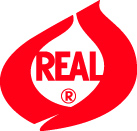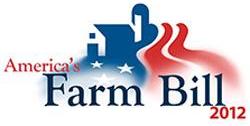NMPF will now manage the licensing and use of the REAL® Seal, one of the most iconic and recognizable product integrity logos used in the food industry.
Effective March 15, 2012, the management of the REAL® Seal program was transferred from the United Dairy Industry Association to NMPF. This change was the result of an agreement between the two organizations that the transfer was the best opportunity to place a renewed emphasis on highlighting the importance and value of American-made dairy foods.
“The REAL® Seal was created more than 30 years ago to help consumers distinguish between real and artificial cheeses, as the pizza category was really taking off,” said Jerry Kozak, President and CEO of NMPF. “Today, a generation later, we still see a need to differentiate American-made dairy products from imports, and real dairy foods from those made with soy or rice or even hemp. Our management of this labeling program will benefit consumers, as well as the farmers who have a direct stake in how their milk is marketed.”
One of NMPF’s primary missions “is protecting the integrity and overall value of U.S. dairy products. NMPF has expertise in food labeling requirements and the regulatory process affecting dairy product standards,” Kozak noted. “With NMPF’s link to dairy producers and its dedication to protecting dairy product integrity, NMPF will be able to provide valuable insight that will allow for growth of the program,” he said.
While the program will not undergo any immediate changes, Kozak said the process has begun to determine how to make the REAL® Seal an even more effective marketing tool for dairy product manufacturers, dairy product processors, food processors and food service providers.
“Consumers continue to express an interest in food quality and integrity, through the choices they make at grocery stores and restaurants,” Kozak said. “Labeling is an integral part of creating and maintaining a dialogue with them.”



 Organization Will Promote Use of Logo to Differentiate American-Made Dairy Foods from Imports and Imitations
Organization Will Promote Use of Logo to Differentiate American-Made Dairy Foods from Imports and Imitations The
The  ARLINGTON, VA – The National Milk Producers Federation’s (NMPF) Board of Directors supported a resolution today urging Congress to pass a Farm Bill in 2012, one that contains an improved safety net for farmers in the form of the Dairy Security Act.
ARLINGTON, VA – The National Milk Producers Federation’s (NMPF) Board of Directors supported a resolution today urging Congress to pass a Farm Bill in 2012, one that contains an improved safety net for farmers in the form of the Dairy Security Act.



